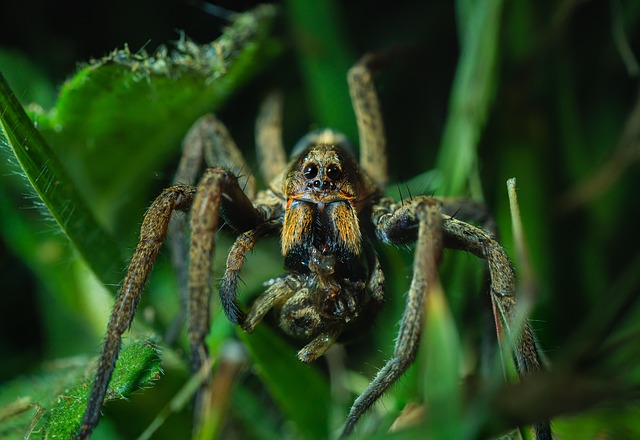Moisture is a key attractant for pests, making it critical to integrate professional pest inspection services into comprehensive moisture assessments. Experts focus on high-risk areas like basements, kitchens, and hidden spaces to detect signs of excess moisture, rodents, termites, bed bugs, and ants. Regular inspections prevent infestations, promote property damage mitigation, and ensure healthier environments in both residential and commercial settings.
Moisture is a silent attractor for pests, breeding their populations and instigating infestations. Conducting thorough moisture assessments is crucial for identifying conditions that lure pests like termites, rodents, and bed bugs. This article delves into the significance of professional pest inspection services in pinpointing problem areas, focusing on key sectors during inspections, and outlining post-inspection measures to forestall pest infestations in both residential and commercial settings.
Understanding Moisture as a Pest Magnet
Moisture is a key factor in attracting pests to homes and commercial properties, making it an essential element to consider during inspections. Professional pest infestation inspection services often uncover that high moisture levels create ideal conditions for various pests to thrive. From termites feasting on wood structures to rodents seeking warm, damp places to nest, moisture serves as both a sign and a draw for these intruders.
A thorough home pest inspection or commercial pest detection service should assess the presence of excess moisture, especially in areas prone to water accumulation like basements, kitchens, and bathrooms. Rodent droppings, mold growth, and wood damage can all indicate moisture-related issues that may be driving pest infestation. Bed bug and ant infestation inspections also need to account for these conditions, as they often accompany moisture problems, leading to more comprehensive and effective solutions during the professional pest inspection process.
The Role of Professional Pest Inspection Services in Moisture Assessment
Professional pest inspection services play a pivotal role in comprehensive moisture assessments, especially when identifying conditions that attract pests like rodents, termites, bed bugs, and ants. These experts are equipped with specialized knowledge and tools to detect even subtle signs of moisture issues within residential or commercial properties. A thorough pest detection service not only identifies the presence of pests but also traces their source, which is often linked to moisture problems.
By integrating pest infestation inspection services into moisture assessments, homeowners and business owners can proactively address potential risks. Professional inspectors conduct detailed surveys, utilizing advanced techniques such as thermal imaging and moisture meters to pinpoint areas of elevated humidity or water intrusion. This proactive approach allows for swift remediation, preventing further damage caused by pests and moisture-related issues, ensuring a healthier and more secure environment.
Key Areas to Focus During Moisture-Related Pest Detection Services
During moisture-related pest detection services, several key areas require meticulous attention to identify and mitigate potential pest infestations effectively. Professional pest inspection teams must assess visible water damage, including leaks, puddles, or damp spots, as these environments foster the growth of pests like termites, rodents, and bed bugs. Additionally, examining hidden spaces such as walls, attics, and crawl spaces is crucial because moisture often leads to unseen problems.
Professionals should also look for signs of mold, mildew, and fungus, which not only indicate high moisture levels but also signal potential health hazards. Termite inspection services should focus on areas where wood meets soil, as these are common entry points for termites. Ant infestation inspections should include checking for ant trails and nests, especially in damp areas like kitchens and bathrooms. Bed bug inspections must involve examining mattress seams, furniture crevices, and wall cracks where bed bugs tend to hide. Regular home pest inspection or commercial pest inspection protocols that incorporate these aspects ensure comprehensive coverage and help maintain environments free from pest infestations.
Post-Inspection Actions for Effective Pest Infestation Prevention
After a thorough moisture assessment has identified conditions that may attract pests, immediate post-inspection actions are crucial for effective pest infestation prevention. The first step is to address any moisture issues discovered during the inspection. This could involve fixing leaks, improving drainage, or enhancing ventilation in affected areas to reduce humidity levels and create an environment less conducive to pest breeding.
Engaging professional pest inspection services is a critical next step. These experts can conduct specialized pest detection services tailored to specific pests like termites, rodents, bed bugs, or ants. They employ advanced techniques and tools for accurate pest identification and assess the extent of any existing infestations. By integrating these findings with the moisture assessment data, homeowners or business owners can develop comprehensive strategies to prevent and control future pest problems, ensuring a safer and healthier environment.
Moisture assessments are a critical component of any comprehensive pest infestation inspection service. By understanding the key areas to focus during these evaluations—such as hidden corners, water sources, and structural vulnerabilities—professionals can effectively detect and prevent pests like termites, rodents, and bed bugs. Post-inspection actions, including remediation and sealing entry points, further mitigate risks, ensuring a secure living or working environment. Investing in regular professional pest inspection services is essential for maintaining control over unwanted intruders.
